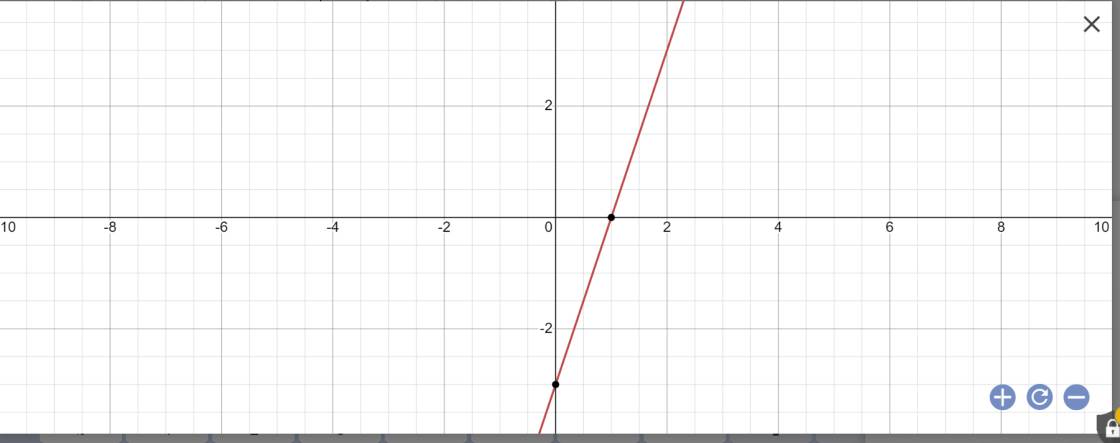Cho hàm số y=\(4x^2-5\)
a)Tính f(3):f(\(\frac{1}{2}\))
b)Tìm x để f(x)=-1
Hãy nhập câu hỏi của bạn vào đây, nếu là tài khoản VIP, bạn sẽ được ưu tiên trả lời.

\(a.\)
Theo đề , ta có : \(y=f\left(x\right)=4x^2-5\)
\(\Rightarrow\)
\(f\left(3\right)=4.\left(3\right)^2-5=31\)
\(f\left(-\frac{1}{2}\right)=4.\left(-\frac{1}{2}\right)^2-5=-4\)
\(b.\)
Ta có : \(f\left(x\right)=-1\)
\(\Rightarrow4x^2-5=-1\)
\(\Rightarrow4x^2=-1+5=4\)
\(\Rightarrow x^2=4:4=1\)
\(\Rightarrow x=\sqrt{1}=1\)
\(c.\)
Ta có :
\(f\left(x\right)=4x^2-5\)
\(\Rightarrow f\left(x\right)=4.\left(x\right)^2-5\) \(\left(1\right)\)
\(f\left(-x\right)=4.\left(-x\right)^2-5=4.\left(x\right)^2-5\) \(\left(2\right)\)
Từ \(\left(1\right)\) và \(\left(2\right)\Rightarrow f\left(x\right)=f\left(-x\right)\)

a) Thay f(3) vào hàm số ta có :
y=f(3)=4.32-5=31
Thay f(-1/2) vào hàm số ta có :
y=f(-1/2)=4.(-1/2)2-5=-4
b) Thay x=-1 vào hàm số ta có : 4.(-1)2-5=-1
=> f(-1) với x=-1

Câu 5:
a: Khi m=3 thì \(f\left(x\right)=\left(2\cdot3+1\right)x-3=7x-3\)
\(f\left(-3\right)=7\cdot\left(-3\right)-3=-21-3=-24\)
\(f\left(0\right)=7\cdot0-3=-3\)
b: Thay x=2 và y=3 vào f(x)=(2m+1)x-3, ta được:
\(2\left(2m+1\right)-3=3\)
=>2(2m+1)=6
=>2m+1=3
=>2m=2
=>m=1
c: Thay m=1 vào hàm số, ta được:
\(y=\left(2\cdot1+1\right)x-3=3x-3\)
*Vẽ đồ thị

d: Để hàm số y=(2m+1)x-3 là hàm số bậc nhất thì \(2m+1\ne0\)
=>\(2m\ne-1\)
=>\(m\ne-\dfrac{1}{2}\)
e: Để đồ thị hàm số y=(2m+1)x-3 song song với đường thẳng y=5x+1 thì \(\left\{{}\begin{matrix}2m+1=5\\-3\ne1\end{matrix}\right.\)
=>2m+1=5
=>2m=4
=>m=2

a: \(F\left(3\right)=3\left(3-2\right)=3\cdot1=3\)
\(\left[F\left(\dfrac{2}{3}\right)\right]^2=\left[\dfrac{2}{3}\cdot\left(\dfrac{2}{3}-2\right)\right]^2\)
\(=\left[\dfrac{2}{3}\cdot\dfrac{-4}{3}\right]^2=\left(-\dfrac{8}{9}\right)^2=\dfrac{64}{81}\)
\(G\left(-\dfrac{1}{2}\right)=-\left(-\dfrac{1}{2}\right)+6=6+\dfrac{1}{2}=\dfrac{13}{2}\)
b: F(x)=0
=>x(x-2)=0
=>\(\left[{}\begin{matrix}x=0\\x-2=0\end{matrix}\right.\Leftrightarrow\left[{}\begin{matrix}x=0\\x=2\end{matrix}\right.\)
c: F(a)=G(a)
=>\(a\left(a-2\right)=-a+6\)
=>\(a^2-2a+a-6=0\)
=>\(a^2-a-6=0\)
=>(a-3)(a+2)=0
=>\(\left[{}\begin{matrix}a-3=0\\a+2=0\end{matrix}\right.\Leftrightarrow\left[{}\begin{matrix}a=3\\a=-2\end{matrix}\right.\)



a) thay f(-2) vào hàm số ta có :
y=f(-2)=(-4).(-2)+3=11
thay f(-1) vào hàm số ta có :
y=f(-1)=(-4).(-1)+3=7
thay f(0) vào hàm số ta có :
y=f(0)=-4.0+3=-1
thay f(-1/2) vào hàm số ta có :
y=f(-1/2)=(-4).(-1/2)+3=5
thay f(1/2) vào hàm số ta có :
y=f(-1/2)=(-4).1/2+3=1
b)
f(x)=-1 <=> -4x+3=-1 => x=1
f(x)=-3 <=> -4x+3=-3 => x=3/2
f(x)=7 <=> -4x+3=7 => x=-1